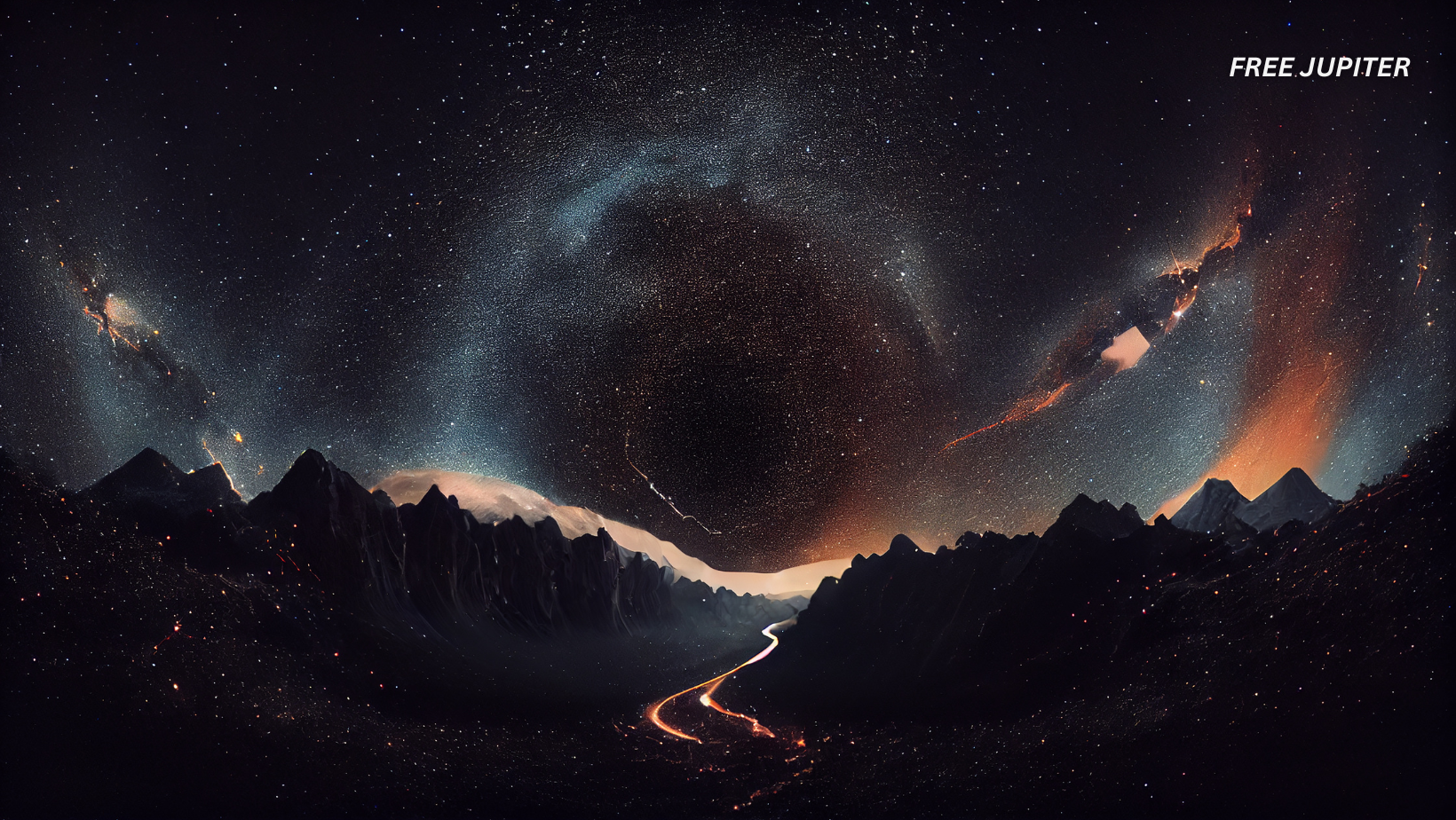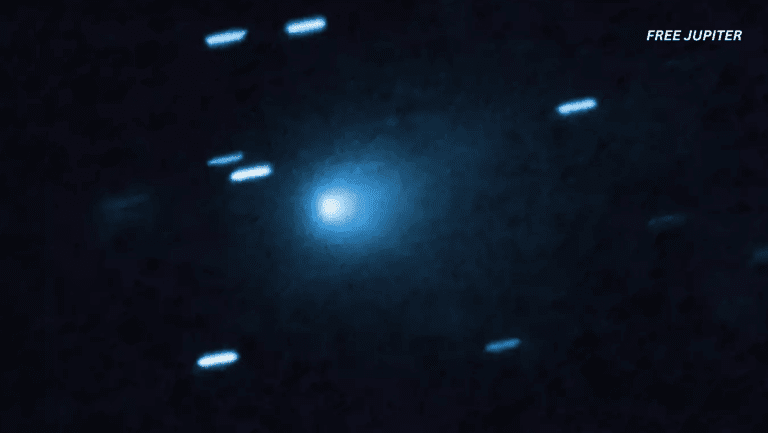Friendly Note: FreeJupiter.com shares general info for curious minds 🌟 Please fact-check all claims—and always check health matters with a professional 💙
A paradigm-shifting reassessment of the universe’s lifespan has jolted the astrophysics community, upending decades of theoretical predictions about the cosmos’s ultimate fate. Recent calculations propose that the universe’s most resilient structures, white dwarfs and neutron stars, may disintegrate far sooner than previously estimated, accelerating the timeline for cosmic decay by orders of magnitude. While still unimaginably distant, this revised expiration date of 10⁷⁸ years (a 1 followed by 78 zeros) challenges the once-vaunted figure of 10¹¹⁰⁰ years, compressing the universe’s twilight into a comparatively brisk countdown.
Quantum Mechanics Meets Cosmic Evolution
The study, conducted by astrophysicists at Radboud University, hinges on a radical extension of Hawking radiation, a quantum phenomenon where black holes emit particles until they evaporate. The team’s breakthrough lies in applying this principle beyond black holes to all massive celestial objects, from neutron stars to rogue planets. Using quantum field theory in curved spacetime, they modeled how gravitational fields around dense objects spawn particle-antiparticle pairs, siphoning energy from the objects themselves.
Dr. Heino Falcke, a co-author, elaborates: “Previous models treated black holes as unique in their ability to emit Hawking radiation. Our work shows that any mass warping spacetime-whether a black hole or a white dwarf-triggers this evaporation process. The universe’s decay isn’t a series of isolated events but a universal law.”
Read more: Scientists May Have Located the “Missing Half” Of Universe’s Matter
White Dwarfs: The Universe’s Unexpected Weak Link
White dwarfs, the Earth-sized cores of dead stars, have long been considered nearly indestructible. Composed of degenerate matter and slowly cooling over eons, they were thought to outlast all other structures. Earlier projections suggested these “stellar embers” could persist for 10¹¹⁰⁰ years, surviving until the universe reached maximum entropy, or heat death.
The Radboud team’s analysis, however, introduces a critical flaw in this assumption. Their models incorporate gravitational pair production, a process where spacetime curvature near massive objects spontaneously generates particles. Unlike black holes, white dwarfs lack event horizons, allowing these particles to escape more readily. Dr. Michael Wondrak, lead author, explains: “Every time a particle pair forms, the star loses a minuscule amount of mass. Over cosmological timescales, this trickle becomes a flood.”
The result? White dwarfs could fully evaporate in 10⁷⁸ years-a timescale 10¹⁰²² times shorter than prior estimates. For comparison, if the original projection spanned the distance from Earth to the Andromeda galaxy, the revised timeline would barely reach the Moon.
The Domino Effect on Cosmic Fate
This accelerated decay has cascading implications for the universe’s endgame:
- Proton Decay Obsolescence: The hypothetical decay of protons, once considered the universe’s final act, may never occur. If white dwarfs vanish first, no matter will remain to experience proton breakdown.
- Black Hole Paradox: While supermassive black holes still dominate evaporation timelines (up to 10¹⁰⁰ years), the study suggests smaller black holes-those with masses similar to stars-will dissipate alongside white dwarfs.
- Entropy’s Shortcut: The universe’s journey toward a uniform, lifeless void-a state of maximum entropy-could leapfrog intermediate phases, bypassing eras of degenerate matter and black hole dominance.
Dr. Walter van Suijlekom, a study co-author, notes: “This isn’t just about stars. Asteroids, planets, even space dust-all mass-bearing objects contribute to this countdown. The universe’s expiration date is written in the mass-energy of its contents.”
Read more: Astronomers Tuned Into a Nearby Star’s “Music” and Made a Shocking Discovery
Humanity’s Place in the Cosmic Timeline
For a species whose civilizations rise and fall in millennia, 10⁷⁸ years is abstraction incarnate. Yet this research anchors existential questions in quantitative rigor. Consider:
- The universe is currently 13.8 billion years old (1.38 × 10¹⁰ years).
- The revised timeline spans 10⁷⁸ years-10⁶⁸ times longer than the current age.
- If the universe’s lifespan were a 24-hour day, humans emerged in the final 0.0000000000000000000001 seconds.
Dr. Falcke reflects: “We’re chronicling the universe’s retirement plan-a reminder that nothing, not even spacetime, is immutable. Yet this ‘shortened’ timeline still offers near-infinite time for complexity to arise… and vanish.”
Beyond the Void: What Comes Next?
Post-evaporation theories remain contentious. Some posit a cyclic universe, where quantum fluctuations spark new Big Bangs. Others envision eternal silence-a heat death where spacetime itself stops expanding. The Radboud team avoids conjecture, focusing instead on observable physics. As Dr. Wondrak states: “Our models terminate at evaporation. What lies beyond is philosophy.”
A Timeline of Cosmic Evolution
To contextualize the study’s findings:
- Present Day: Stars form, burn, and die; galaxies collide; black holes merge.
- 10¹⁴ Years: Star formation ceases; galaxies darken as stars exhaust fuel.
- 10⁴⁰ Years: Protons (if unstable) decay; black holes dominate.
- 10⁷⁸ Years: White dwarfs and neutron stars evaporate via Hawking radiation.
- 10¹⁰⁰ Years: Supermassive black holes dissipate; universe reaches near-zero energy.
White Dwarfs as Potential Cradles for Life
While white dwarfs are often viewed as inert stellar remnants, recent research suggests they might serve as unlikely habitats for life. Although these stars no longer generate energy through nuclear fusion, their gradual cooling and residual luminosity create shifting habitable zones around them. Under specific conditions, planets orbiting white dwarfs could maintain liquid water, a key ingredient for life, for billions of years.
Intriguingly, white dwarfs undergo a process known as neon-22 distillation, which temporarily slows their cooling. This phenomenon extends the stability of their habitable zones by up to 10 billion years, offering a prolonged window for life to potentially develop and persist. Such findings challenge the traditional view of white dwarfs as lifeless and suggest that the search for extraterrestrial life might fruitfully include these stellar remnants.
The Mechanics Behind Cooling Pauses in White Dwarfs
This cooling delay arises from an unexpected internal process where the crystallization of the white dwarf’s core causes buoyant crystals to rise, displacing heavier liquid downward. This movement releases gravitational energy that heats the star’s interior, slowing its temperature decline. Observations from the Gaia satellite have confirmed this subtle but significant energy release, marking a novel astrophysical phenomenon.
These internal dynamics not only affect the star’s longevity but also influence the orbital dynamics and climate stability of surrounding planets. The extended habitable zones created by this process offer new avenues for understanding planetary system evolution and the potential for life in the universe.
Extrasolar Comets and White Dwarf Systems
Adding further complexity, white dwarfs often interact with remnants of their original planetary systems, including extrasolar comets. These interactions can lead to accretion events that affect the white dwarf’s mass and evolution. Such phenomena underscore the dynamic and interconnected nature of stellar remnants and their environments, influencing both their physical properties and the prospects for habitability.
Read more: Scientists Trigger a ‘Black Hole Bomb’ Explosion in the Lab
Faster Cosmic Decay and Its Broader Implications
Complementing these stellar insights are broader cosmological findings indicating that the universe itself may be decaying more rapidly than previously thought. Calculations incorporating Hawking radiation effects suggest that not only black holes but also white dwarfs and other massive objects gradually evaporate over time, compressing the universe’s lifespan to about 10⁷⁸ years. This accelerated timeline reframes the cosmic endgame and invites renewed scrutiny of how matter and energy evolve on the grandest scales.
Conclusion: Time’s Relentless Ticking
While the universe’s revised expiration startles, it underscores a fundamental truth: entropy always wins. From the first stars to the last black hole, the cosmos is in flux-a symphony of creation and destruction playing across aeons. For humanity, this revised timeline changes little, yet it enriches our understanding of existence’s fragility.
As the authors wryly conclude: “The universe’s retirement party remains RSVP-only. For now, we recommend enjoying the show.”
This comprehensive exploration weaves cutting-edge astrophysics with existential inquiry, offering a detailed yet accessible understanding of cosmic mortality. By grounding abstract theories in relatable analogies and robust scientific discourse, it invites readers to ponder humanity’s fleeting yet wondrous role in the universe’s grand narrative.










